| hair salons & barbershops iconversations |
| Technology Savvy Social Media engaging Industry Moguls in "Real-Time" |
| |
 |
|
|
|
|
Cara Delevingne |
|
|
|
How to bleach your hair like a professional |
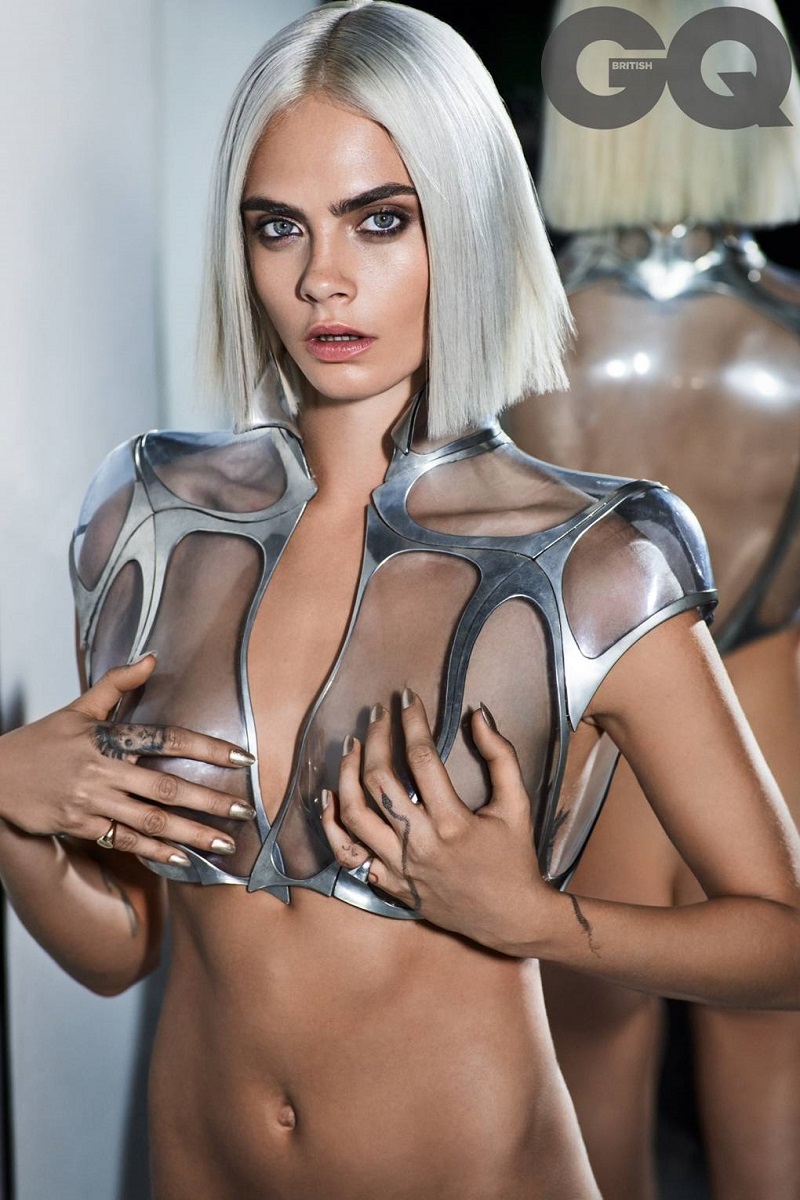 |
|
Follow Vogue ’s guide to bleaching your hair for perfect results |
|
|
|
Want to channel Marilyn Monroe’s platinum-blonde locks? Follow Vogue ’s guide to bleaching your hair for perfect results every time whether you’re doing it at home or in the salon. |
| |
| Learning how to bleach your hair is no mean feat |
|
Learning how to bleach your hair is no mean feat, and it’s not for the faint-hearted. It is a lengthy, meticulous process and not an area where one size fits all. Far from it – some hair types take to colour with no hassle, absorbing multiple tones within minutes, while others will take hours upon hours in salon or out to achieve the desired finish. But once you know the basic rules on how to bleach hair responsibly to produce the best finish, that sought-after platinum white or blonde colour is right at your fingertips. |
| |
| Vogue’s checklist before bleaching hair: |
| 1. Have you had any chemical treatments in the last six months? If so, have you trimmed away the treated hair or has it grown out? Any remnants of the chemical can compromise your final colour. |
| |
| 2. Make sure your hair is in good condition before you start. Bleach can be very stripping on the hair, so it’s important to use plenty of conditioning masks and treatments. For two weeks in the run-up to bleaching, apply a mask every other night. Vogue recommends Kérastase Elixir Ultime Masque or Living Proof Restore Mask Treatment. |
| |
| 3. Never-coloured-before hair that is light brown or lighter can be treated in one session, while darker hair will take multiple sessions. “The process really depends on the hair type, but a bleach on virgin hair will need bleaching on the ends first leaving an inch or so regrowth, then allowing this to lift for up to an hour and then bleaching roots to match,” says Shannon Gallacher, bleaching expert at Nicola Clarke for John Frieda. |
| |
| 4. Don’t bleach freshly washed hair as a scalp stripped of natural oils can get irritated. |
| |
| How to bleach your hair in a salon (what to ask your colourist) |
| 1. Ask for a sample strip, especially if you have coloured your hair before as this may affect the final result. |
| |
| 2. Be prepared to visit again. “Roots need less time than ends as the heat from the head speeds up the process,” explains Gallacher. “Once the hair has an even tone, the bleach is rinsed off and toned to the desired shade, but some hair will need more than one service to achieve the colour wanted.” |
| |
| 3. After you have bleached your hair with an expert, follow with an in-salon Olaplex treatment to immediately inject as much hydration as possible. |
| |
| Read more at: How To Bleach Your Hair Like A Pro |
|
|
|
|
How to look after your hair after you bleach it |
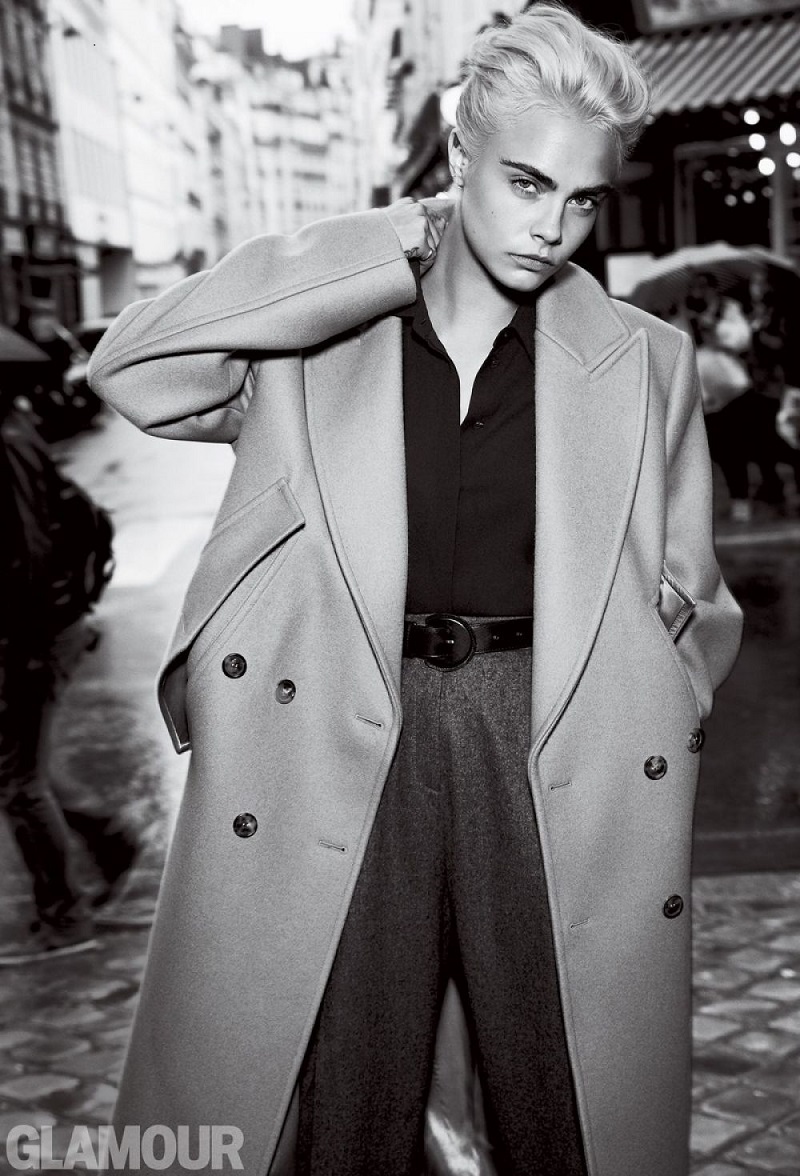 |
|
Want to channel Marilyn Monroe’s platinum blonde locks? |
|
|
| How to bleach your hair at home |
| 1. Choose a good all-over bleach, at-home color. The best for an even colour are L’Oréal Paris Colorista Bleach Kit and Wella Blondor Lightening System. |
| |
| 2. Protect your hands at all times with gloves. The bleaching powders are strong and irritating to the skin. |
| |
| 3. Use white towels or linens to avoid staining. |
| |
| 4. Mix your developer and bleach powder at the correct ratio for the planned effect – ie, highlights will require less bleach, while a full head of hair will need more. |
| |
| 5. Use a dye brush to apply the bleach all over your head. Part the hair and colour as close to the roots as possible to ensure full coverage. |
| |
| 6. Leave the bleach in for the stated time until your hair is a light-yellow colour. |
| |
| 7. For darker hair, you’ll need to do this several times over, but try to leave a couple of weeks between treatments as it can damage the hair. |
| |
| 8. Follow this with toner to get the exact colour you want. |
| |
| 9. Rinse, rinse and rinse again. |
| |
| 10. Finish the whole process with a hydrating hair mask – a lot of at-home kits come with this. |
| |
| How to look after your hair after you bleach it |
| Hydration is key. Use a hydrating mask immediately after you’ve thoroughly rinsed out your toner and bleach. A weekly hair treatment mask will keep the hair from getting brittle and knotted. Try Olaplex 3 for weekly treatments and keep applying hair oil to condition and smooth the ends. Vogue recommends Kérastase Elixir Ultime Oleo-Complexe Versatile Beautifying Oil. Leave-in conditioners will become your new best friend – apply at every point of heat styling. |
| |
| Vogue’s bleach rules: |
| - You should leave six to eight weeks between colour treatments. |
| |
| - Never run two consecutive bleach treatments through your hair in one sitting as this will cause far too much damage. |
| |
| - According to the American Pregnancy Association, the level of chemicals that can be absorbed into the skin from permanent and semi-permanent hair dye is minimal and non-toxic and therefore not dangerous while pregnant. |
| |
| - If you have very light brown hair, an extreme platinum blonde is achievable with a high ratio of bleach. However it is best to see an expert for this for at least the first treatment to ensure the correct colour is achieved. |
| |
| Read more at: How To Bleach Your Hair Like A Pro |
|
|
|
|
Cara Delevingne: ‘I learnt I had to be strong to be vulnerable’ |
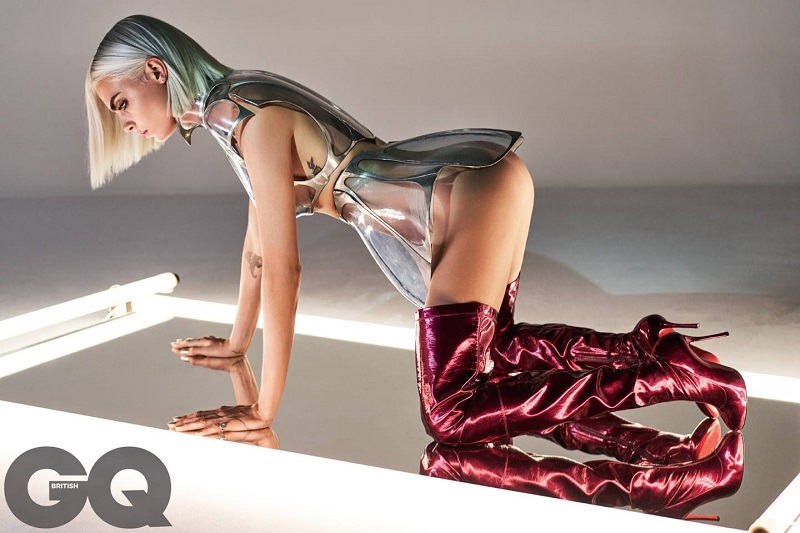 |
|
Cara Delevingne is showing her mettle |
|
|
| Cara Delevingne is showing her mettle. As a singer and an actor this one-time star supermodel has found her place in the universe. Ahead of her first blockbusting lead role in Luc Besson’s new sci-fi spectacular, GQ joins the French director for a journey inside the head space of this very British rule-breaker, who silenced self-doubt to unleash a talent that was never just skin deep. |
| |
| LB: Do you remember the first person who trusted your ability to do things? |
| |
| CD: Um, there have been stages of it, but it happened first in modelling. I worked in modelling for a year before I ever got a high fashion job. And I was working at Asos five days a week, doing catalogue stuff, and I met [Burberry's] Christopher Bailey and instead of just looking at me and saying, "No, you're too short," or, "No, you don't look right," he said, "What do you want to do? What are your passions? What makes you wake up in the morning?" And I was like, "What?" He actually wanted to know what drove me, and the first big campaign I got was Burberry. |
| |
| GQ: And what about music? |
| |
| CD: In music, Pharrell [Williams] was one of the people who made me think I could even attempt to do music. |
| |
| GQ: Do you remember what he said? |
| |
| CD: Again, I met him through modelling. We were doing a Vogue shoot together and we were eating McDonald's. I was just chatting about music and I would kind of be sitting there beatboxing and drumming away and he was like, "I want you to come to my hotel room tonight - and bring your guitar." I was like, "What? That would be so weird." I went, and he had all his amazing team, and he was like, "Sing a song." |
| |
| GQ: No pressure... |
| |
| CD: He could see it in my face, thinking I can't do this and he was like, "Look, just close your eyes, remember what it feels like to sing in the shower and just enjoy it." And I did. I sang [George Gershwin's] "Summertime". So I feel like I've had really amazing mentors along the way. |
| |
| LB: I noticed also, before we started, that you were... I don't know if it was yoga [but] I can feel the difference when you do it. |
| |
| CD: Yeah, I do yoga every morning. But when I stopped the film, I stopped doing yoga. I always have a problem when I finish films. For six months you create this family, you get so close, it's like a home, and then suddenly it's over and my abandonment issues go through the roof. |
| |
| GQ: It's like the end of a relationship. |
| |
| CD: Yeah, it's like the end of a relationship. And also, I'd been given a part where I play this stable, together person. Then you're not that person anymore and you're like, "Who am I?" I'm suddenly hit with this identity crisis and then abandoned and then everything. When I finish films, I have to spend months picking myself up. |
| |
| GQ: So is yoga something you do to balance yourself now? |
| |
| CD: I started doing it, like, four, five years ago. When I started is when I first broke into acting. |
| |
| GQ: What did it do for you? |
| |
| CD: I had no... I didn't feel anything. I think I would have turned into a sociopath if I hadn't started yoga. I had no contact with my emotions at all. It was really crazy, because, honestly, I remember meeting my yoga tutor for the first time and crying for the first time in years. I felt blind before. Now, every year I go away to Thailand to a yoga retreat for a week and even before I signed on to the film I was like, "You have to let me go to this yoga retreat." I mean, it's one of the biggest budget productions, and Luc was like, "Yeah. If it's going to help you, you should go." |
| |
| Read more at: Cara Delevingne: ‘I learnt I had to be strong to be vulnerable’ |
|
|
|
|
MTV Awards, Cara wore Saint Laurent Black and Silver Mini Dress |
 |
|
Cara Delevingne |
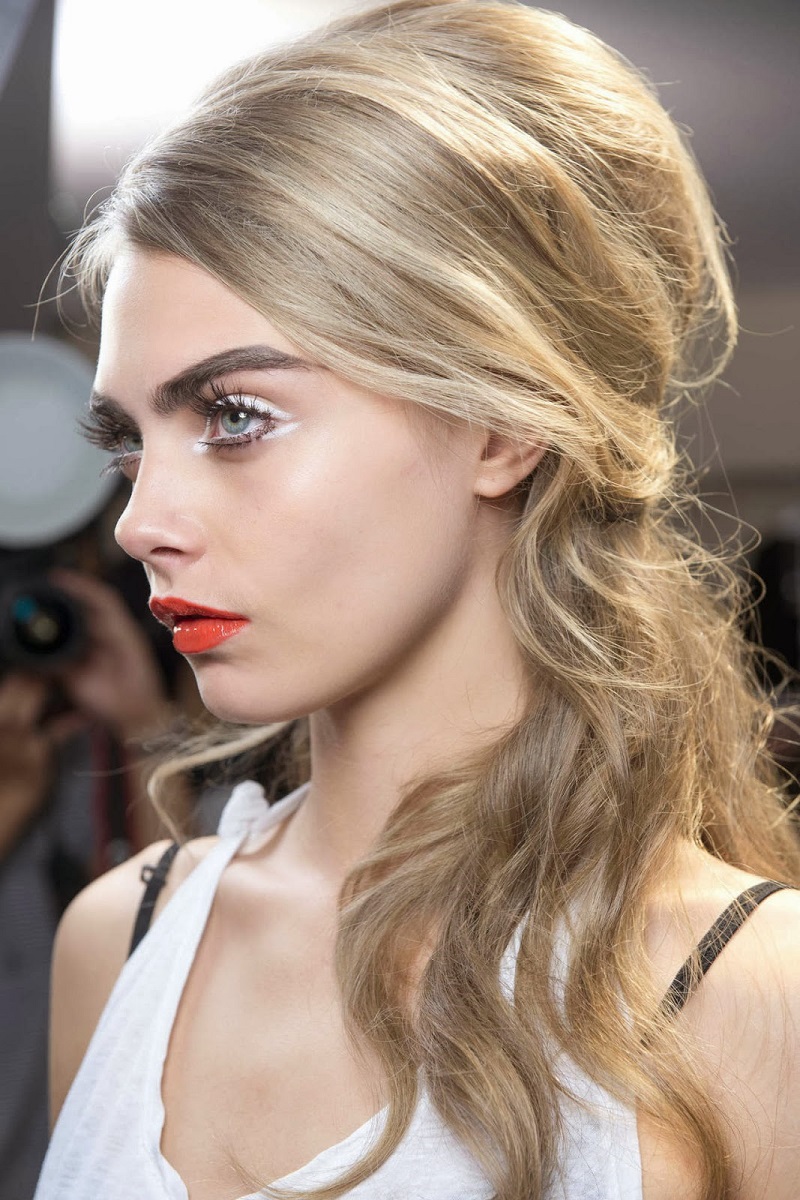 |
|
The Secret to Every Hollywood and Instagram Star’s Perfect Hair |
|
|
|
|
|
|
| Celebrity hairstylist Jen Atkin |
| “It’s 2017. If you’re not born with the hair you want, buy it.” With those words in mind, I decided to shed my expectations and give 2018’s extensions a try. |
| |
| I have struggled with volume and length since my early 20s and have tried just about every hair-growth supplement under the sun—with no success. So if this is what the celebrity, supermodel, and Instagram starlets are doing to get their luscious locks, why not give it a shot? |
|
| Enter Amanda Scott at Serge Normant at John Frieda's New York salon. |
| |
| When I arrived for my consultation at the salon, which counts Sarah Jessica Parker, Julia Roberts, and Blake Lively among its clientele, one of the first things Amanda asked me as she assessed my hair, was: “How committed are you to this? What are your goals?” |
| |
| extensions are indeed a commitment |
| Amanda explained to me that extensions are indeed a commitment. (We’re not talking about the kind you can buy in a drug store.) For anyone who is going to get extensions or already has them, it should be a red flag if your specialist does not do a consultation in which they lay out your options in terms of types of extensions and the care they will require, as well as the details of the pricing. (Be warned: They can cost thousands of dollars). |
| |
| financial investment |
| “I think a lot of women dive into the world of extensions without fully thinking about the financial investment required and the amount of maintenance that will be needed,” says Scott. “Also, people should be careful about who they choose to work with. A thorough consultation with a stylist will help determine if that person is right for you. Hair extensions have a bad reputation as damaging, and that can be true if you work with the wrong person.” |
| |
| Amanda, who does two types of extensions: Klix, Easihair Pro |
| I’m not the type of girl who goes for blowouts every other day or even every week. (Who has that kind of time?) My typical hair routine involves shampoo, conditioner, a spritz of sea salt spray, and perhaps a flirtation with a curling iron, so I decided I wanted the hair that required the smallest time commitment on my end and could last for about six months. (You can get them taken out whenever you want, but it’s good to know when deciding what kind you get to know whether you want to have extensions for a year or more, or just a few months). Amanda, who does two types of extensions—Klix, which can last up to six months with consecutive wear, and Easihair Pro, which can last up to a year with good care—patiently listened to my long list of silly questions and wisely suggested that I go with Klix. |
| |
| Klix, made of 100 percent virgin Remy human hair |
| At my next appointment, I had the long hair I had always wanted—and had not had since I was probably a teenager—in about an hour. Klix, made of 100 percent virgin Remy human hair, comes in all different shades and Amanda had expertly picked out a blonde that mixed in well with my array of highlights. (Giancarlo Carollo, a hair-color genius at Serge Normant at John Frieda, also worked his magic to blend my colors so it was a perfect combination of ashy and gold tones to make it all look natural.) The hair comes in pieces that are placed discreetly near the scalp and attached to strands of your natural hair with no tape or glue required, meaning they are supposed to be non-damaging. |
| |
| Not all hair extensions are created equal |
| “Not all hair extensions are created equal,” says Scott. “Individual extensions (like Great Lengths, for example) will most certainly cause damage to the hair. With any type of application like that, as the extension grows out, it can twist and cause breakage because it doesn’t lie flat and isn’t wide enough to prevent rotating. Some names for that kind of application are beads, cold fusion, microfusion, microtips, glue tips, bonds, and strand-by-strand.” |
| |
| I’ll admit, when Amanda was first putting the extensions in, I was slightly terrified only because the hair comes really long (like Cher-hair long). But after she trimmed my hair and Giancarlo colored it, I was feeling confident in my once-mousy-and-unremarkable-turned-Hollywood-ready hair. |
| |
| maintenance |
| Before I left, Amanda made sure to give me the full run-through on maintenance. “Try to wash your hair in the morning and let it air dry if you can. If you can’t do that, try not to brush it too much when it’s wet; blow dry it first and then comb it out with a Wet Brush just like you would with your normal hair,” she said. (Hair is most elastic when it’s wet, making it more prone to stretching and breaking.) If you don’t have a Wet Brush, she suggests a paddle brush. Avoid a boar brush.` and whatever you do, don’t use a T3 or a Dyson blow dryer, as they produce too much heat, according to Scott. |
| |
| It took some time to adjust to my hair and the care it required. It soon became clear what Amanda meant about commitment. |
| |
| For starters, blow drying my hair took twice as long as I was used to. I carefully braided my hair each night to protect the hair from tangling or breaking while I slept. I diligently took my 10,000 micrograms of biotin each day to help my own hair, used Snob Girls Body Dense bio-serum conditioning capsules (as Amanda says, extension hair loves leave-in conditioner), and used John Frieda Miraculous Recovery conditioning products regularly. Every four weeks or so, I visited Amanda to have the extensions tightened and adjusted. The process was usually quick and painless and I was out of the salon in about an hour or less. A few times, my hair got knotted around the extensions, but even that was a surprisingly easy fix. |
| |
| financial investment |
| Gorgeous locks are not only a commitment but also a financial investment. The Klix hair itself costs anywhere from $750 (half pack) to $1,400 (full pack; price includes the hair, initial installation, and a haircut). Depending on how well you take care of it, it can last up to six months (mine did) until it needs to be replaced with a new set of Klix. Plus, the maintenance every four to six weeks costs $200 to $300 each time. If you go with Easihair Pro Tape-in Extensions, which last up to a year, installation ranges from $300 to $700 (price determined by hair length and the amount of hair). Maintenance for those, which is every eight to 10 weeks, costs anywhere from $300 to $700 each time. |
| |
| Once I got the hang of washing and brushing my hair extensions, (and started allotting the extra time to actually style it), I nearly forgot the hair extensions were there. At least in the sense that they weren’t much more of a struggle than my normal hair. Roughly six months later, it was time to either take them out or put new ones in. I couldn’t bear to part ways with my new long-hair look, so Amanda put in a new set of Klix. As she took out the old set and put in the new set, I was scared to look at the condition of my own hair. |
| |
| From day one, Amanda was committed to my bigger hair goals, beyond just the instant fix of hair extensions. I had followed her instructions to help with the growth of my own hair and taken better care of my hair than ever before. All of that effort paid off. |
| |
| "Look how long your hair is! It’s growing and healthy," Amanda reported. |
| |
| As she put the new set of hair extensions in, I felt excited about my hair journey ahead. Vain as it may sound, it’s a pretty empowering thing to feel confident in your hair. |
| |
| Read more at: Extension 411: The Secret to Every Hollywood and Instagram Star’s Perfect Hair |
|
|
|
|
Cara Delevingne: A Bride Less Ordinary |
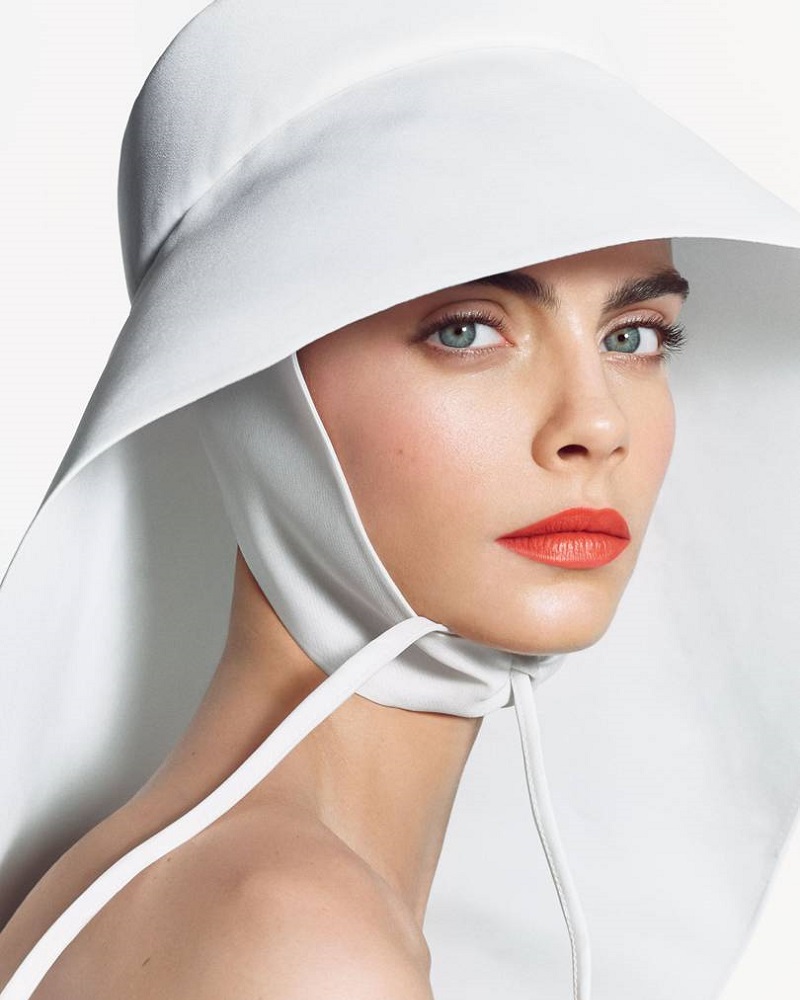 |
|
Cara Delevingne Covers June Vogue |
|
|
|
A royal wedding is always an exciting time for Britain, but I must say it feels like there is something extra special about the nuptials of Prince Harry and Meghan Markle this month. For a start, they land in a year when, on bad days at least, the country can feel like it is becoming ever more divided. Of course, the royal family invites plenty of diverse opinions itself these days, but at its simplest a wedding is a joyful union and a wonderful celebration of togetherness. And this one happens to star a truly fascinating bride. |
|
|
|
Why has Ms Markle struck such a chord with the British public since her engagement was announced at the end of last year? I suspect it is because she offers a really exciting new spin on what aristocracy can mean in the 21st century. A mixed-race – or as she prefers, bi-racial – woman from California, with a successful career under her belt and a proven track record as a campaigner for social change, Meghan Markle is… well, remarkable. When we watch her take her first steps into an ancient institution, she will be an embodiment of all that is modern. She stands up for diversity, for her gender, for equality. In short, she is a woman of today. |
|
|
|
And how should Vogue mark this joyous occasion? Naturally it had to be through fashion. We took the nation’s favourite young supermodel, Cara Delevingne, and cast her in the most avant-garde of bridal tributes. "Modern Romance" proves that wearing a white dress on your big day can be anything but predictable. Sticking with the theme of modernity, Cara also took the time to write about some of the key milestones for her generation which no longer involve just going down the aisle. |
|
|
|
Cara Delevingne dispels the myth that life should be defined by traditional milestones. Dressing up in bridal wear at the Claire Pettibone boutique in Los Angeles, Cara offers some life advice in her classic comedic way. |
| |
| Read more at: Cara Delevingne: A Bride Less Ordinary |
|
|
|
|
Pixie considerations |
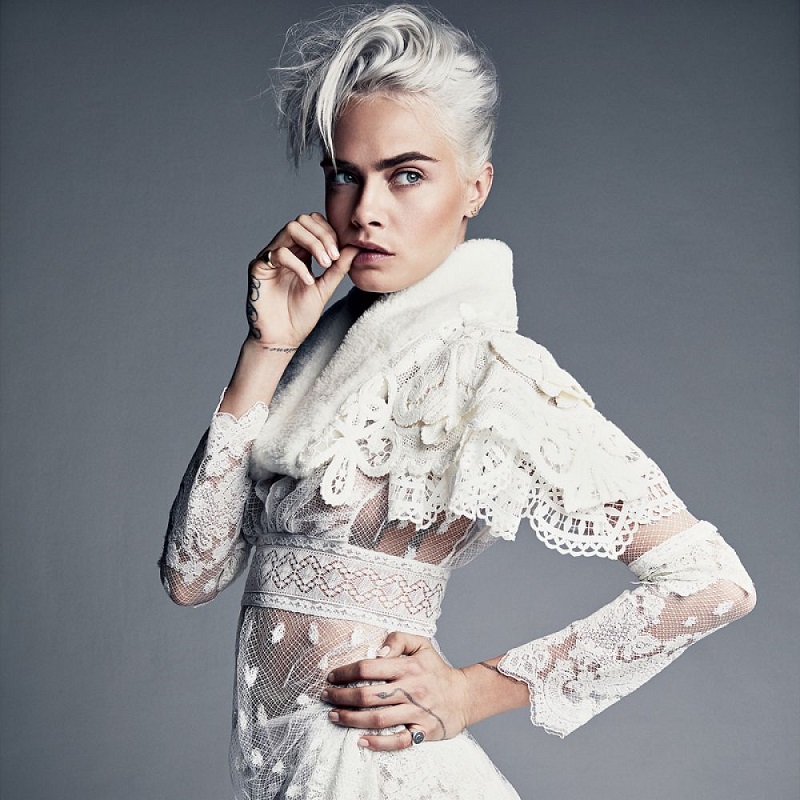 |
|
5 Things to Consider Before Getting a Pixie |
|
|
|
The pixie is a trending cut that’s been gracing the heads of many lovely celebrities. I myself have been debating chopping off my chest-length hair for months now, yet can’t seem to make the cut. Just when I think I’ve garnered the courage to chop (well over) a foot of my hair off, I change my mind again. Let’s face it: Going for the pixie cut is not for the faint of heart. |
| |
|
If you are considering trying out the pixie cut, here are five factors to consider before making the big chop. |
| |
| 1. Facial Features |
| Although there's a short hairstyle to fit every woman, a true pixie is one of the shortest. Think about your facial features, your ears, your neck — are those features you feel comfortable showing the world 24 hours a day, seven days a week? |
| |
| If you prefer to have the option of longer hair around your face, a pixie may not be for you. This is actually the biggest challenge for me, as I use my long hair as a “curtain” at certain times — for example, dropping my kids off at school when I don’t have a lick of makeup on! |
| |
| 2. Styling Time |
| The good news? With super short hair, styling time decreases dramatically. Bad news? Unlike longer hair, which you can throw into a quick ponytail on those rushed mornings, you will need to spend a few minutes styling your hair every day. Short hair can also equal insane bed head. |
| |
| 3. Products |
| Styling products are must-haves for shorter haircuts. Waxes and pomades add texture, movement and shine, and also keep frizz and puffy hair at bay. I’m sure I’ll be trying tons of new products when (and if) the time comes. |
| |
| 4. Accessories |
| Many women mention feeling different about their clothing necklines and jewelry once they make the chop. You might also feel the need to amp up your makeup a little bit. A bold, punchy lip color looks gorgeous with a pixie cut. |
| |
| 5. Confidence |
| When all is said and done, the one piece of advice I’ve heard the most is that your confidence matters most. If you rock a pixie with an assured smile, the compliments from friends, family and strangers will roll in. |
| |
| Read more at: 5 Things to Consider Before Getting a Pixie |
|
|
|
|
|
|
To cut your hair or not to cut your hair |
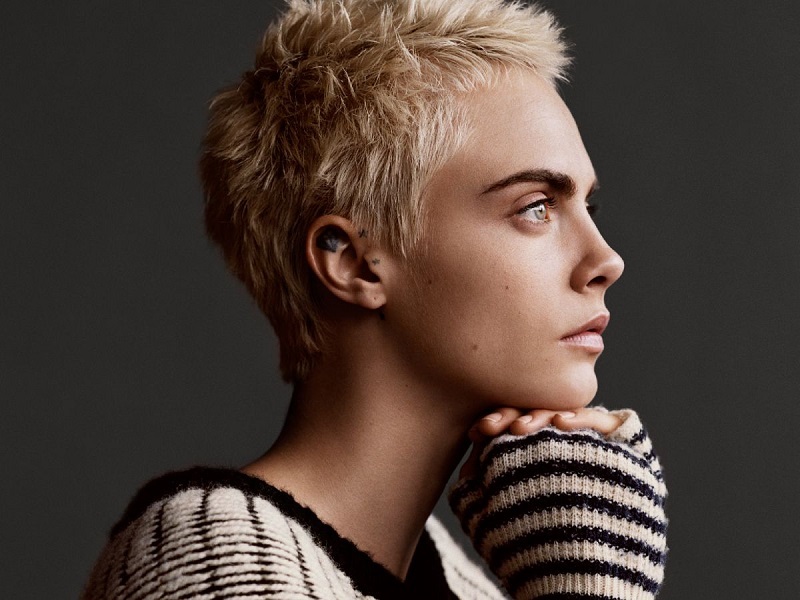 |
|
To cut your hair or not to cut your hair |
|
|
| To cut your hair or not to cut your hair? It’s the recurring question we've all pondered, and it’s often met with a touch of excitement and a dash of anxiety. |
| |
| Making a change to your hair — whether big or small — is an emotional decision, but it’s definitely not one you have to make alone. |
| |
| To help combat haircut confusion, TODAY Style consulted the experts to figure out if you’re really ready for a cut and color. We’re also serving up some sassy hair trends to give you a bit of inspiration! |
| |
| Signs it’s time for a change |
| When you sit down for your routine haircut, does your stylist automatically ask you: “Want the usual?” |
| |
| It’s so easy to fall into a hair pattern and ignore new styles entirely. After all, a new hairstyle requires a bit of research at the least or a whole lifestyle change at the most. |
| |
| If you’re struggling to decide if it’s time for a hair change, start by asking yourself the following three questions: |
| |
| Do you wear your hair up all the time? |
| |
| Does your hair take forever to dry? |
| |
| If you answered "yes" to one or more of the above, it’s time to switch things up! |
| |
| “You know it’s time for a change when you can only recognize yourself with one particular haircut and/or style,” said celebrity hairstylist Michael Duenas. “Mix it up! It will change your entire attitude.” |
| |
| According to Katie Manselle, Oribe educator and owner of Culture Hair Studio in Durham, North Carolina, every woman has a hair “sweet spot” and once you hit it, you’re typically showered with compliments on your ‘do from both friends and perfect strangers alike. Once the compliments stop flowing in, it may be time to revisit your current style. |
| |
| Hair is fun |
| “Hair is fun! It is the ultimate accessory. You don’t have to make a major change, but if you are feeling even just a little curious about what it might be like to do something a little different, my belief is — it’s time!” Manselle said. |
| |
| Questions to ask yourself |
| Sure, you might be contemplating a hair change, but the real question is: Are you truly ready for one? If you’re hesitating even a little bit, it’s time to have an honest conversation with yourself and ask a few hard-hitting hair questions. |
| |
| For starters, if your new style requires more frequent upkeep (think bobs or pixies), are you OK with visiting the salon more often? How often are you willing to style your new look? |
| |
| If you’re aiming to make a drastic change, will your new style complement your lifestyle? And is the style you’re considering compatible with your hair texture and face shape? |
| |
| Taking the time to ask yourself some difficult questions can help ensure you get a haircut you’ll love. It also helps to consider what is or isn’t working with your current cut and the last time you had a similar look (if ever). Another question to ask: Are you acting on impulse after an emotional event (like a breakup)? |
| |
| "Ask yourself: 'Why am I cutting my hair?' Without a strong answer to this, you may realize you shouldn’t proceed with the haircut," said celebrity hairstylist Alexander Armand. |
| |
| The bottom line? New hairstyles can breathe new life into your world, but just make sure you're ready before making a huge change! |
| |
| Hair-cutting tips |
| Even after you’ve made the decision to make a hair change, there are still a number of confusing questions that can arise en route to the salon and even afterwards. How often should you get it cut? Do you need to wash your hair before heading to the salon? How much should you tip? |
| |
| It can all be downright confusing, but it doesn’t have to be! |
| |
| Your ideal time between haircuts |
| Your ideal time between haircuts really depends on your hair’s texture, style and length, but most women can easily go six weeks before heading back to the salon. Some hair types require a bit more or less maintenance while short cuts, like pixies, can require a trip to the salon every four weeks. |
| |
| Longer styles |
| Longer styles work best when trimmed every two months (depending on your hair's density) and shorter styles are best maintained when trimmed every six weeks. But curly hair is in a league of its own. |
| |
| Curly hair |
| “Curly hair can go a bit longer, sometimes even three to four months before needing a cut. Since your hair is curly, it grows ‘around’ and not down, so your hair getting longer isn’t too noticeable,” Duenas said. “As long as you keep it healthy, you can keep pushing that haircut aside.” |
| |
| Hair Growth |
| Just keep in mind that the average person’s hair grows about one to two inches a month, so frequent trims can help keep your style looking fresh. “If you are growing out your hair, a haircut every two to three months is OK if you aren’t putting a lot of heat on your hair," celebrity hairstylist Sunnie Brook added. |
| |
| washing your hair before a haircut |
| What about washing your hair before a haircut? Is it socially acceptable to show up to the salon with second-day hair? Turns out, it’s totally OK! In fact, it can help your stylist get a better idea of how you typically wear your hair. |
| |
| Stylist Considerations |
| “I highly recommend your stylist sees your hair in the style you typically wear it so they can assess what your hair needs. If you always blow your hair out, but wear it natural to your appointment, that doesn’t give your stylist the full picture,” Giovanni Vaccaro, Glamsquad creative director, said. |
| |
| Showing up with dry hair can also help your stylist see growth patterns more easily. If you feel strongly about showing up with clean hair, though, don’t feel like you can't wash before a haircut. “If there’s a real need to see its behavior just cleaned, I encourage clients to come that way. There is always a story from the guest’s standpoint as well as the hair’s," Manselle said. |
| |
| specific times to cut hair |
| You might also be wondering if there are specific times when you really should get a haircut. Two easily come to mind for Vaccaro: |
| |
| If your hair is visibly damaged |
| |
| If you're prepping for a big event |
| |
| "I style a lot of brides and I always recommend having a fresh cut three weeks before her big day. That allows the stylist to customize her cut based on the hairstyle chosen for her wedding,” Vaccaro said. |
| |
| Read more at: 3 questions you should ask yourself before the salon |
|
|
|
|
|
|
Treat your hair extensions the way you would your real hair |
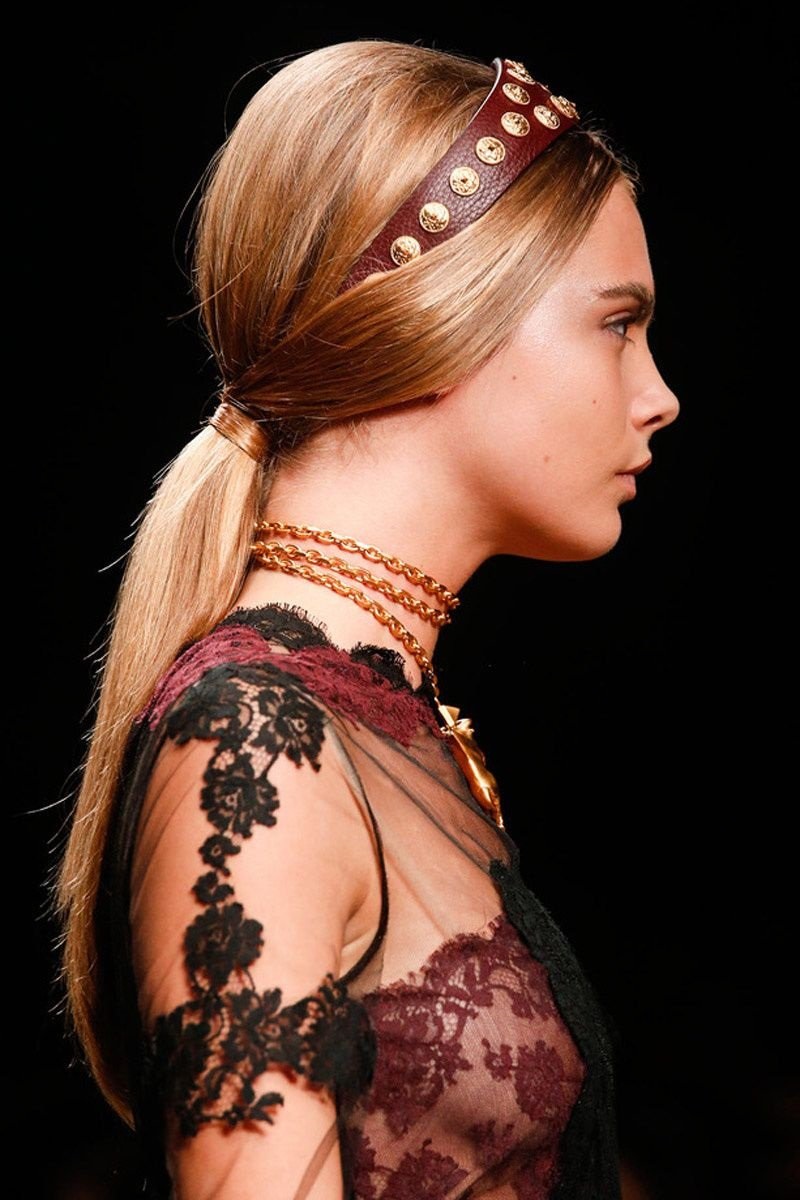 |
|
How to Maintain Flawless Hair Extensions |
|
|
| Treat them the way you would your real hair. “Naturally textured virgin hair extensions should be treated and cared for the same way you’d treat your own natural hair. Regularly washing, moisturizing and detangling your textured hair extensions is key to extending the life of the hair,” advises Opara. |
|
|
| Dry your hair well. Hair that hasn’t been dried properly can lead to scalp issues, including fungal ones. So if you have thick hair, be sure to clip your hair in sections and dry your braided sections thoroughly. |
|
|
| Don’t neglect your real hair. “Hair that hasn’t been maintained under a weave may begin to suffer from breakage or matting when the extensions are removed,” warns Pitters. |
|
|
| Remove them in a timely fashion. Extensions will damage your hair if left in too long. Pitters recommends redoing interlock sew-ins every 6 weeks and the braided sew-in version every 8 to 10 weeks. |
| |
| Avoid oils. If you have glue-on bonded extensions, oils will break down the extension glue. And that is something that you don’t want to happen until you are ready to remove your pieces. |
| |
| Take a break now and then. Allow your natural hair and scalp to breathe from time to time. Relieve the stress placed on your hair and scalp by waiting a week or two after removal of your extensions before getting them replaced. |
| |
| Read more at: How to Maintain Flawless Hair Extensions |
|
|
|
|
Volume Up: How To Get Thicker Hair |
 |
|
Aside from genetics, what causes thin hair? |
|
|
|
Do you have thin, lacklustre hair but dream of thick, glossy hair? From what to eat to the best products, cuts and colour, Vogue’s no-nonsense guide shows you how. |
|
|
|
Aside from genetics, what causes thin hair? |
|
|
|
Over-styling and over-colouring your hair |
|
Heat-based styling products and bleach-laden colouring agents can strip your hair of all its strengthening fibres, leaving it weak. If you can bear to, take a break from colouring your hair and step away from the styling products. Opt for a sulfate-free shampoo and conditioner to give your hair a thorough cleanse, too, and overnight masks and oils will help to nourish the hair. |
|
|
|
Hormonal changes |
|
Changes in health can have a direct impact on the thickness of your hair. Fluctuations in hormones - particularly an imbalanced thyroid - can not only impact skin and weight, but also hair. Many women experience a change in their hair consistency during pregnancy. If there has a been a really dramatic change in hair thickness in a short space of time, it’s worth seeking medical advice. |
|
|
|
Stress |
|
Stress and trauma can have a direct impact on hair growth. The term for shock-related hair loss is telogen effluvium - a physical response to the impact of stress on the body and mind. It isn’t usually long-term, but it can take up to six months to cure. The best way to counter this? Self-care. Plenty of sleep and a diet rich in B vitamins and packed with wholegrains, protein and dark, leafy greens will help to slow down the rate of hair loss. |
|
|
|
How can you thicken hair with products? |
|
|
|
Shampoo/Conditioning |
|
Formulas in thickening shampoos are now very effective, and there are plenty to choose from. The best solutions offer nourishing treatment for the hair, while lifting excess oil and product from hair shafts to stop it from getting weighed down. Vogue recommends the Aveda Invati range and Nanogen Thickening Treatment Shampoo for Women. |
|
|
|
Brushing |
|
Opt for a ceramic-barrel brush when blow-drying. And choose an ionic dryer that will blow out negative ions, leaving the hair smoothed and de-frizzed. |
|
|
|
Styling |
|
Introduce a root-lifter to your hair-styling regime. This will lift the hair further and give it a nicer fall across the face. |
|
|
|
How can you make your hair thicker through your diet? |
|
|
|
Supplements |
|
Look for a great hair-stimulating multivitamin. This should be packed with keratin, the amino-acid L-lysine, soya protein, iron and vitamins B12 and D3. All of these help to contribute to your hair’s thickness. |
|
|
|
Food types |
|
Keep to a simple, nourishing diet full of lean proteins, leafy greens, and carrots for vitamin A. |
|
|
|
How can you cut your hair to make it look thicker? |
|
Don’t let hair get too long - a blunt, relatively short cut will immediately give your hair the appearance of volume and thickness. Try a sweeping fringe to disguise any thinning. And be smart about colour. Avoid anything too one-dimensional - multiple tones in highlights or lowlights will give the hair depth and avoid it looking too thin. |
|
|
|
Trichologist Anabel Kingsley says, “thickening, strengthening protein sprays can also be helpful. They immediately add volume to the hair, giving an instant boost. They also strengthen the hair over time, which helps to reduce hair fall as the result of breakage. While breakage is not true loss from the follicle, it can thin the appearance of the mid-lengths and ends.” |
|
|
|
Percy & Reed founder and hair stylist Adam Reed adds, “Try not to rough dry the hair as this can take the life out of it before you have even started - towel-dry hair as best as possible and then dry the hair from damp to dry.” |
|
|
| Read more at: Volume Up: How To Get Thicker Hair |
|
|
|
|
|
|
iconversations engaging industry moguls |
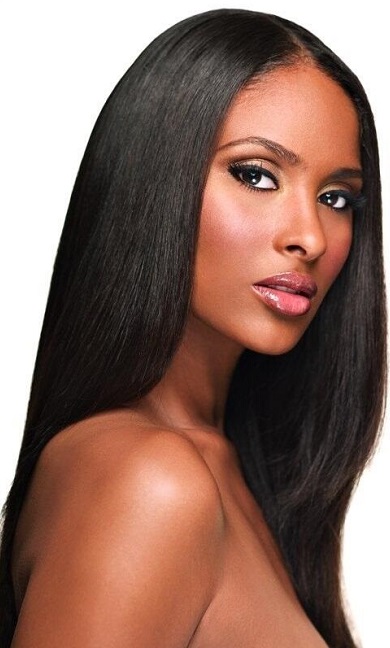 |
|
|
|
|
| who we are |
Technology Savvy Social Media engaging Business Moguls in
"Real-Time" marketing Hair Salons and Barbershops |
|
|
iconversations
is savvy social media marketing using Enterprise Architecture business and data analysis methodologies to engage industry moguls around the globe from all business sectors to market
hair salons
barbershops
|
| Hair Salons and Barbershops are an integral fabric within American culture and are of major interest to all communities within the country. Black Hair Salons and Black Barbershop uses the following social media venues to market client business profiles. |
| |
| blackhairsalons.TWITTER |
| blackbarbershop.twitter |
| blackhairsalons.instagram |
| ihairsalons.twitter |
| salonsaturday.twitter |
| |
| what we do |
| Black Hair Salons and Black Barbershop in association with iConversations Social Media engages business industries including Hair and Beauty, Entertainment, National News Media, Food and Fitness Industries, Professional Athletes, Celebrity Chefs, Political Representatives, plus more, to market Hair Salons and Barbershops. |
| |
| how we accomplish |
| iConversations engages social media using customer relationship management best practices, and savvy marketing techniques incorporated with humor and wit to market. During this process Hair Salons and Barbershop business profiles are marketed using Twitter, Instagram, Facebook. |
| |
|
|
|
|
|
conversations social media |
|
"A lifestyle everyone should have access to." |
|
|
- iconversations
parterned with
iSalons
is savvy interactive online social media consulting on
the "cutting edge" of information technology engaging industry moguls around the
globe in "Real-Time" showcasing all business industry sectors.
-
isalons
iconversations
engages industry moguls online interactively in
conversations within the
Entertainment Industry, Hair and Beauty business, National News Media, Professional Athletes through sports media, Celebrity Chefs
who engage audiences with mouth watering cuisine.
|
-
iConversations engages it's
social media colleagues with
CRM business and data analysis, humor, wit that range from indepth political analysis of the
Nations Capital
key influential players,
Mr. President,
POTUS, Speaker of the House,to
teasing palettes with picturesue mouth water cuisine, humoring hearts,
occasional platonic flirting, iPlaytonics, the latest fashion passion,
to fitness routines, plus more.
-
iConversations Clients' business products and services are
showcased to a very upscale diverse demographics of quality social media
colleagues, thus giving your business high visibility locally, regionally, and
around the globe.
-
iConversations has cultivated
quality social media
relationships engaging upscale diverse collaborative communities and businesses
around the globe in "Real-Time".
- Conversations values family, relationships, and her
social media colleagues. We sincerely value people and our relationships with
them first.
|
|
|
|